POOL TOOLS Here are a couple of useful tools made from PVC pipe. The first is of my own design, and is a lilyfeeder. You loop the nylon cord over the fertilizer, and maintain tension on the cord until pushing the tab into the pot. Then release tension, twist, and pull out.
![]()
![]()
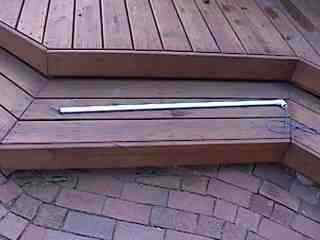
PVC lilyfeeder.
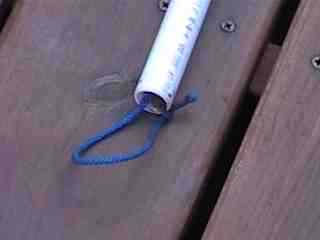
Loop end to hold fertilizer.
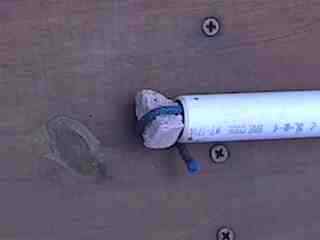
Chunk of fertilizer ready for insertion into lily pot.
The lily pruner was invented by Gary Thorburn - gthorburn@shaw.ca. I don't think he will mind if I show it to you. It consists of a 1/2 " pvc pipe inside a 3/4" pvc pipe that has been cut into a hook shape (Note: Be sure to use thin walled 200psi pvc pipe or the 1/2 inch pipe will not fit inside.) . You simply catch the stem with the hook, then push the inside pvc down to cut it off. It works best when you sharpen the edges of the inside pvc.
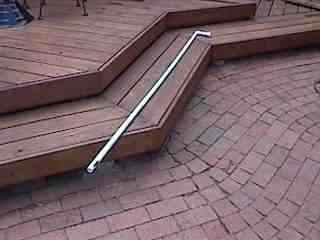
Overall shot of Lilypruner. Note ell on handle end to limit travel.
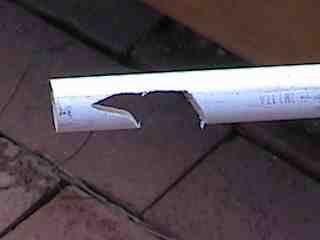
Business end of lilypruner.
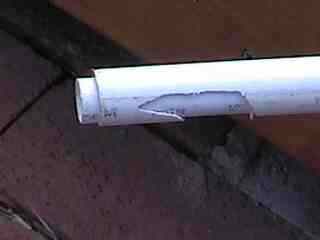
Lilypruner with inside pipe pushed down.
This next item is not really a tool, but may prove useful. If you are using a Supreme mag-drive or other submersible pump and need to replace the worthless foam thingy they give you to attach to the pump inlet, you might want to try one of these. First, the parts are some 1/4" mesh galvanized hardware cloth, and various PVC fittings, from 3: diameter cap and adapter, down to as small as 3/4 inch.
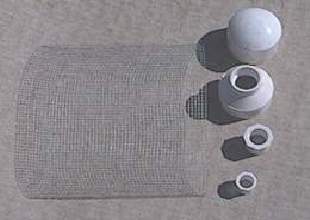
Assemble the parts as shown below and you are ready for weeks of trouble-free pumping!
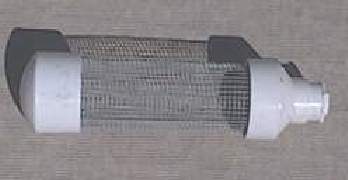
LILY POT HANDLE
Have you ever had trouble wrestling your water lily pots out of your pool, only to have them slip out of your hands and dump back into the pool? Do you find it difficult to carry them without getting the pot against your clothes and getting wet in the process? Here's a simple easy-does-it way to expidite handling of your water lily pots....HANDLES!! That's right, handles. Obtain some electrical cable, size 10 or 12 UF type. Use the UF type because it is gray, rather than white, as is Romex and does not show as much in the pond. Per the drawing below, simply make a horizontal cut an inch below the pot rim, in line with the holes at the bottom of the pot. If you are using pots with no holes, you will have to cut slots at the bottom edge of the pot as well. Then simply bend the cable as shown and feed it through the slots. Make the bottom bends as sharp as you can, leaving about four inches of cable inside the pots, then fill and plant the pot as usual. Should you worry about the effect of the copper wire on your pond chemistry (I don't) simply dab the cut ends of the cable with silicone caulk.
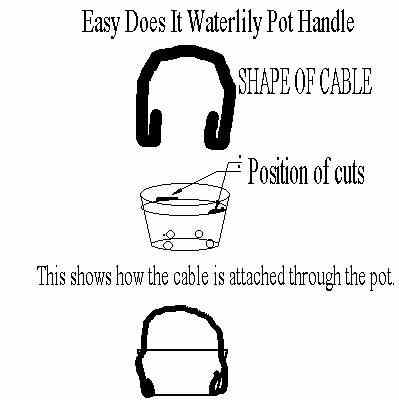
Last modified on March 29,2000

